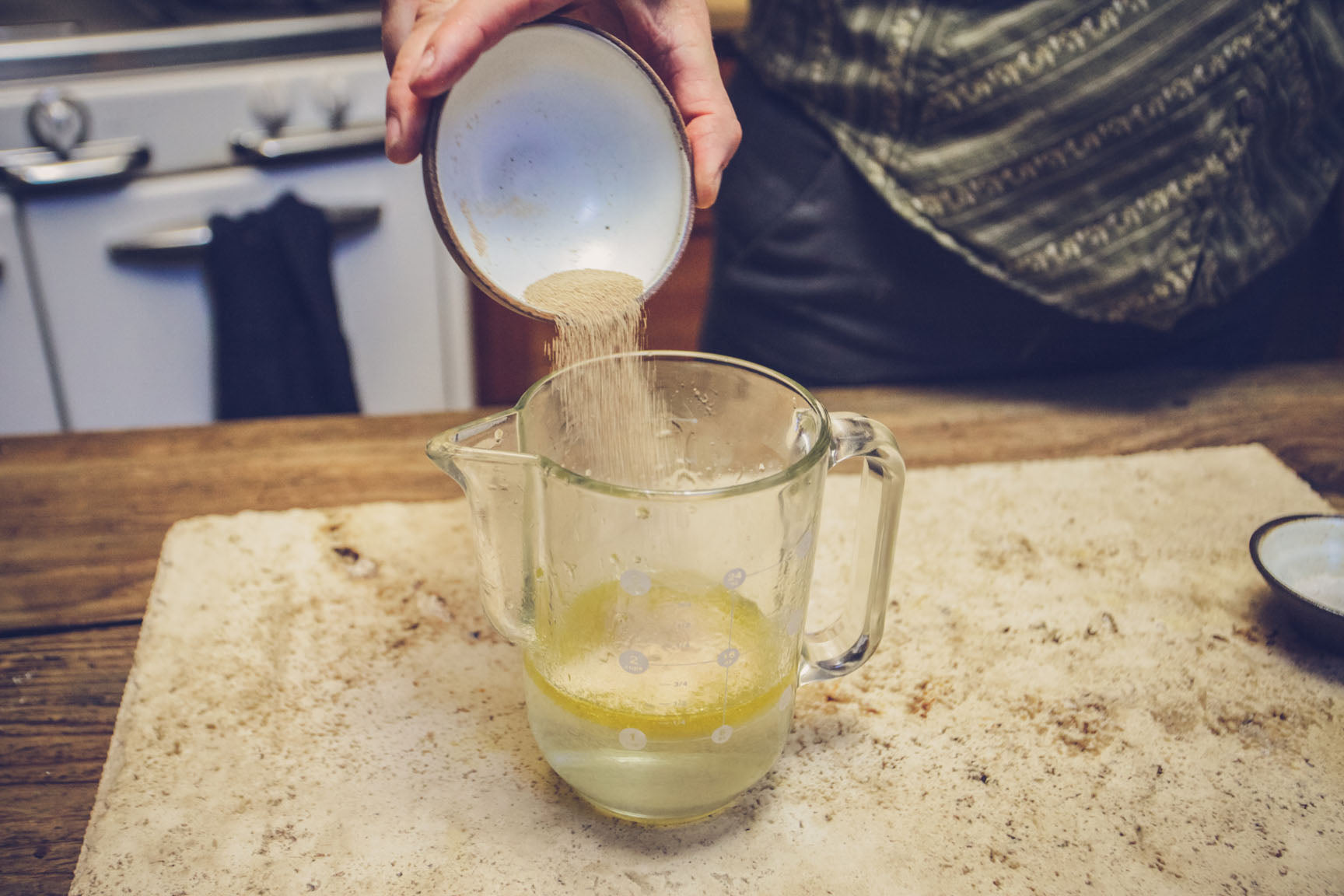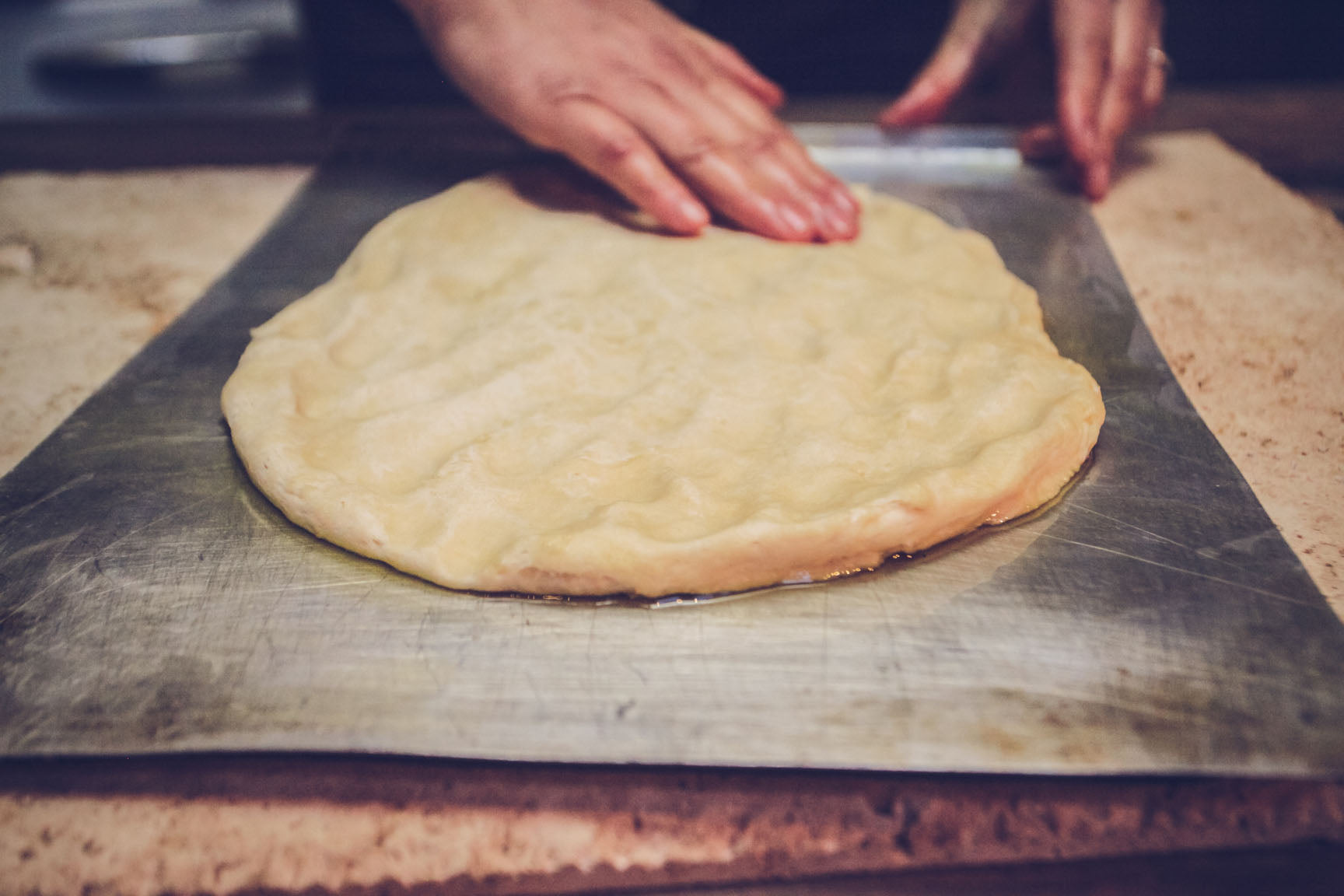- Continue Shopping
- Your Cart is Empty
Meyer Lemon Hearth Bread

What You'll Need
Equipment
- large glass measuring cup
- large mixing bowl
- wooden spoon
- measuring spoons
- bees wax wrap or plastic wrap
- 9" x 13" sheet pan or baking pan
- mandoline slicer
Ingredients
- 1 cup warm water (about 110° F)
- 1/4 cup olive oil, plus more for serving, if desired
- 1 packet dry bread yeast
- 3 cups unbleached, all-purpose flour
- 1 teaspoon fine sea salt
- 2 Meyer lemons, thinly sliced
- 1 small bunch fresh herbs of your choosing- rosemary, or lemon thyme
- Coarse sea salt or Maldon Salt, for sprinkling
This simple, elegant focaccia is a new party staple. It’s a beautiful bread, and the thin lemon slices are subtly surprising and just right with a drizzle of good olive oil. Another citrus celebration adapted from the aptly titled book Citrus: Sweet and Savory Sun-Kissed Recipes, by Valerie Aikman-Smith and Victoria Pearson. The original recipe calls for lemon thyme, but we like fresh rosemary just as well, and in the summer, ribbons of fresh basil sound absolutely lovely, too, so use the herb that calls to you.
This recipe calls for the yeast to be added to a mixture of oil and water; unusual since the oil is often added after the yeast has bloomed on the surface of the warm water. While we see no real reason to call for the addition of oil so early in the process, we have to admit that we were charmed by the strange, yeasty-lava-lamp formation that this creates. And it seems to work just as well. If you’re a seasoned baker and can’t abide by this foolishness, add the oil after the yeast has had a chance to work in the warm water.
Directions
Pour the water into a glass measuring cup. (Glass, so you can watch the yeast dance.)Pour the oil over the top of the water, and mix it in. Sprinkle the yeast over the top.
 As the oil settles into a film at the top, the yeast sinks below the surface of the water, taking some of the oil with it. But the yeast-covered oil, being lighter than the water, rises back to the top in globules.
As the oil settles into a film at the top, the yeast sinks below the surface of the water, taking some of the oil with it. But the yeast-covered oil, being lighter than the water, rises back to the top in globules.  Secretly, we do not understand why the original recipe calls for the oil to be added with the yeast; most yeasted breads add the oil in after the yeast has had time to work in the warm water. You could do it that way, too, if you prefer. But it is kind of a fun science project to watch the yeast lava bubble up. And, since focaccia is a flatbread, the yeast does not have to develop as fully as it does in breads where a large rise is desired. In any case, allow the mixture to stand for 5 minutes.
Secretly, we do not understand why the original recipe calls for the oil to be added with the yeast; most yeasted breads add the oil in after the yeast has had time to work in the warm water. You could do it that way, too, if you prefer. But it is kind of a fun science project to watch the yeast lava bubble up. And, since focaccia is a flatbread, the yeast does not have to develop as fully as it does in breads where a large rise is desired. In any case, allow the mixture to stand for 5 minutes. Measure the flour and salt into a large bowl.
 Pour the yeast slurry slowly over the top, and mix with a wooden spoon until the dough comes together. It is not necessary to knead very much, just until the dough comes together into a ball.
Pour the yeast slurry slowly over the top, and mix with a wooden spoon until the dough comes together. It is not necessary to knead very much, just until the dough comes together into a ball.
 Transfer the dough to a well-oiled bowl, and roll the dough around in it until it, too, has a fine coating of oil over the surface.
Transfer the dough to a well-oiled bowl, and roll the dough around in it until it, too, has a fine coating of oil over the surface.  Cover the bowl and set it in a warm place. Allow the dough to rise until it has doubled in size, about 1 1/2 hours.
Cover the bowl and set it in a warm place. Allow the dough to rise until it has doubled in size, about 1 1/2 hours.Oil a 9" x 13" sheet pan or baking pan. Transfer the dough to the center of the sheet, punching it down to deflate it.
 Then, using your fingers, work the dough, pressing and stretching it until it covers the baking sheet evenly.
Then, using your fingers, work the dough, pressing and stretching it until it covers the baking sheet evenly.  Dimple the surface of the dough with fingerprints, the better to trap oil, salt, and flavor.
Dimple the surface of the dough with fingerprints, the better to trap oil, salt, and flavor.
Dash a small amount of oil across the dough, and brush it over the surface. Allow the dough to rest in a warm place for 30 minutes, covered with a clean dishcloth.
 Meanwhile, heat the oven to 375° F.
Meanwhile, heat the oven to 375° F.Use a mandoline to slice the lemons as thin as possible. wash and shake dry the herbs, and scatter them across the surface of the focaccia. Arrange the lemon slices over the surface of the bread. Sprinkle generously with coarse sea salt or Maldon flakes.

Bake for 25 or 30 minutes at 375 °F, until the crust is golden brown and fragrant. This bread is at its best served warm, perhaps with some oil or goat cheese, but lovely just as it is.

Over to You
It’s part of our mission here at Mountain Feed to help you make delicious, sustainable, homemade food more often. Stop by and say hello on Facebook, Twitter, Instagram or Pinterest.
